Do you plan to start an online business or take your existing business digital but have no idea what boxes you need to check for your website to be the best?
A great website is a necessity today. It has the power to not only drive new customers but also keep engaging the existing ones, leading to a higher business impact. We must be on top of our game when creating a great website.
A website is the backbone of your digital presence and brand reputation. So, you should always consider entrusting creating great business websites and outsourcing web development to experts.
Before delving into the ten must-haves of a great website, let’s first take a look at what goes into making one.
Defining Objectives


If you wish to have a good website, you need to have clear objectives. Do you want a website to make more sales? Or do you need a website to demonstrate your products to prospective customers? Your answer will dictate the foundation of your website
Broadly, there are two types of websites:
- E-commerce
- Lead generation
An e-commerce website is focused on selling products or services. In contrast, a lead generation website is focused on getting potential customers to fill out a form or contact the company for more information. Both types of websites have different objectives and thus, require different design and development strategies.
An e-commerce website, for example, will need a shopping cart and a payment gateway to process payments. A lead generation website will need an opt-in form to capture leads.
Understanding the objectives of your website is the key to developing a great website. Once you have a clear idea of what you want your website to achieve, the next step is to determine the must-haves for your website. Here are ten of them:
A checklist for the best website
This is an easy-to-understand checklist to help business owners like yourself create a website that meets their expectations.
1. Have beautiful UI and Intuitive UX


A great website must have a beautiful user interface (UI) and an intuitive user experience (UX).
The UI makes the site’s design and includes a variety of components. The buttons are part of the UI, as well as the animations. It’s also important to note that while the UI is a vital part of the product, it isn’t everything.
It takes more time to create the UX than the UI, but it’s easy to overlook its significance. When you’re looking at a website’s UX, you’re looking at it from the customer’s point of view.
- What is the site like to use?
- Is it easy to navigate?
- Is there a solid layout?
- Is the information provided useful and aesthetically pleasing?
2. Pass the Core Web Vitals test

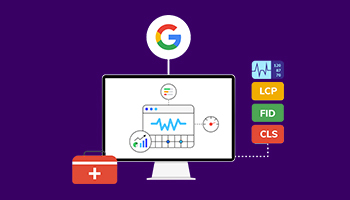
Did you know that websites tend to lose almost 70% more traffic when their load time increases by just 2 seconds (from 3s to 5s)!?
Earlier in 2020, Google announced that Core Web Vitals would be one of the major ranking factors for websites. But what are they?
Core Web Vitals are essentially different metrics that indicate a website’s performance from a technical standpoint that directly affects the user experience. It includes how fast your website loads and how quickly the elements on your website become interactive.
The website must pass the Core Web Vitals test, which includes being accessible from different browsers and devices, loading quickly, having no broken links, and enabling search functionality.
The most important metrics of Core Web Vitals are:
- First Contentful Paint (FCP)
- First Input Delay (FID)
- Largest Contentful Paint (LCP)
- Cumulative Layout Shift (CLS)
You can check any website’s Core Web Vitals assessment on PageSpeed Insights.
3. Mobile Responsiveness


With over half of all website traffic being generated from mobile devices, your website must display correctly on different screen sizes. The website’s layout, text, and images should be automatically resized and adjusted to fit the screen of the device being used.
For example, the web page design that looks incredible on a large screen like a desktop or tablet would not look too good on a smaller screen, like a mobile phone, because the aspect ratio and the size of elements change dramatically.
From an SEO perspective, mobile responsiveness is crucial since search engines like Google are moving to mobile-first indexing. The search engine would prioritize the mobile version of a website to determine organic ranking.
4. Analytics Integration

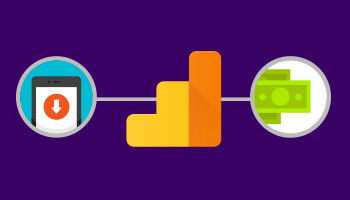
Integrating analytics tools, like Google Analytics, is essential to track the performance of your website. It lets you know which pages are getting more traffic and leads that are converting into sales or subscribers at a higher rate.
Having this data available to you in real-time allows you to optimize these high-performing pages by changing the layout, text, or images to make them even more effective.
5. SEO Friendly

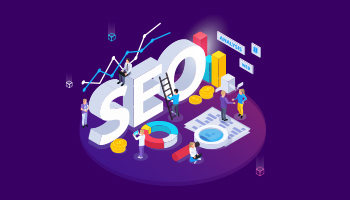
A website must be SEO friendly to rank higher in search engine results pages (SERPs). It should be optimized for search engines to crawl and index the content.
In addition, the website’s titles, meta descriptions, and images must also be properly optimized to get more clicks from users.
Downsizing the images and changing their format from PNG to WebP will also help with a faster load speed and a better Core Web Vitals score.
6. CRM Compatible


Many people consider website development to be a simple process. However, before investing in a website, you should consider the complexities of the process and how to integrate your website with your existing tools. A good website must integrate with your customer relationship management (CRM) or sales automation tool to streamline your sales process, add more features and always help you improve your sales. This helps your business automate the tedious aspects of your sales process, meaning you spend more time with clients and less time on tasks.
Having all of your customers’ information in one secure location lets you easily track their campaign engagement and lifetime value, making it easier to close more deals. It also gives you the power to put suitable offers before the right customers.
In addition, using a CRM-compatible website lets you seamlessly integrate with your website’s shopping cart to pull customer-related data for targeted email marketing.
Some CRM tools to try out are:
- HubSpot CRM
- Salesforce CRM
- Zoho CRM

Relevant Resource:
7. E-Commerce Ready

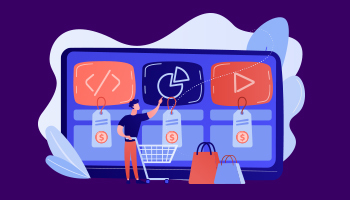
A website must be ready to process payments and handle transactions for e-commerce.
Further, the website must be secure, have an SSL certificate, and use a payment gateway to accept credit cards and other payment methods.
The website must also be designed for shopping cart abandonment recovery to increase the chances of completing the sale.
8. Conversion Rate Optimized

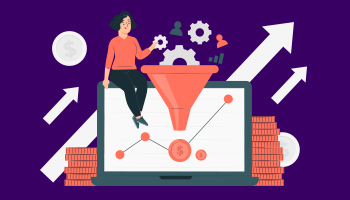
The sole purpose of a website is to convert leads into customers. So, the website’s design, layout, and content must be optimized to increase the conversion rate.
“When you get back to the basics, marketing is simple. Marketing means getting people in your store – once they’re there, getting more of them to buy. Online, this means the following: New Signups = Traffic * Conversion Rate.”
– Hiten Shah | Co-Founder, Crazy Egg
Conversion rate optimization methods include testimonials, trust seals, urgency cues, social proof, and calls to action.
In addition, A/B testing different website elements to see which version performs better is also highly recommended.
9. Be Safe and Secure


If you have ever experienced data theft or a large-scale data leak, you would know what a major problem it is. It destroys the trust of your customers and makes them vary of your company. Google is giving more points to websites that have SSL certificates, and the websites that don’t have them will be considered insecure.
If you wish to receive the most valued points from search engines such as Google, you need an SSL certificate. You will have to look for a trustworthy provider, and it doesn’t matter if you have to pay a higher price because this safety is important.
Additionally, using a payment gateway with PCI compliance lets you securely process credit card transactions without exposing the customers’ sensitive information.
10. Promote Social Sharing


Social media can be an excellent asset for your website, but getting people to share your content is a difficult task. To counter this, there are a few things that you must do:
- Make sure you’re using a content management system that allows you to show social sharing buttons.
- You need to make sure you have these buttons on every post and not just a few.
- You must make sure to include pictures in your posts to maximize their appeal on social media.
It lets you reach a larger audience and drives more traffic to your website. In addition, social media shares help with SEO by getting more links back to your website.
Packing Up
Checking all these boxes will help you or the offshore website development team create a high-converting and revenue-generating website for your business effectively.
Another important thing to keep in mind is that you have to regularly stay on top of the latest web development trends and also keep a close check on your website for 404 errors and other performance issues.
If you are too busy or lack the technical know-how to go about this, then taking the help of professional offshore MarTech service providers is a smart business decision.
Several businesses from countries like the US, Canada, and the UK choose Amura as their website development agency. If you’d like us to help you, too, then feel free to reach out and get on a call with us!
